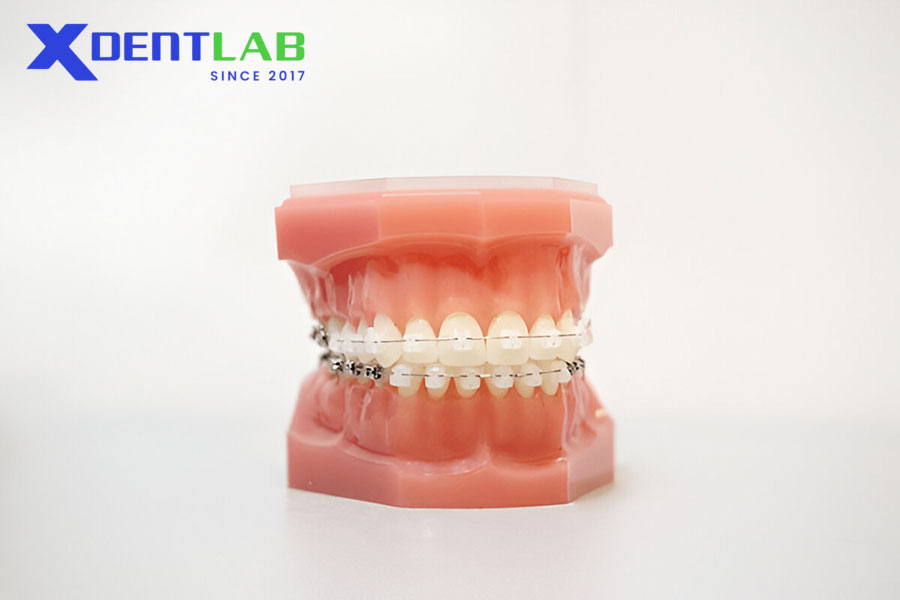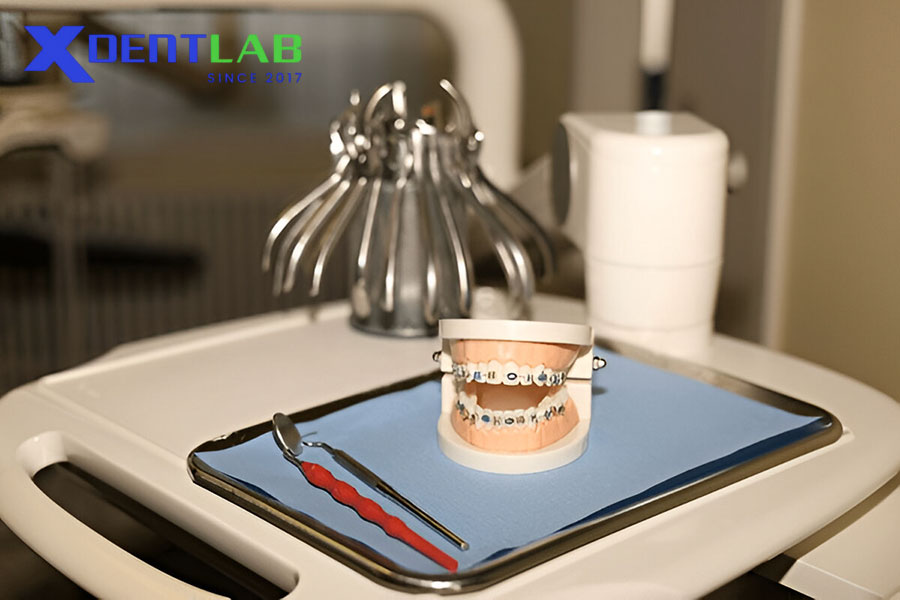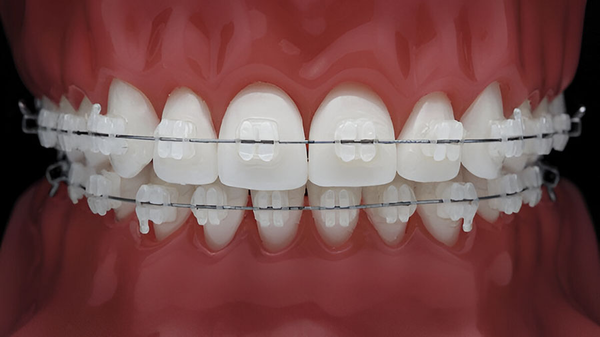Discover the properties, benefits, and limitations of polycarbonate brackets in orthodontics. Learn how advancements in material science are enhancing aesthetic and functional performance.

Table of contents [Show]
- Introduction to Polycarbonate Brackets
- Material Properties and Characteristics
- Reinforcement Technologies
- Clinical Performance Characteristics
- Comparison with Other Bracket Materials
- Fracture Characteristics
- Surface Properties and Friction
- Bonding Protocols
- Clinical Advantages
- Clinical Limitations
- Recent Developments
- Quality Control and Testing
- Treatment Considerations
- Future Directions
- Conclusion
Introduction to Polycarbonate Brackets
Polycarbonate is one of the most commonly used materials in aesthetic orthodontic brackets, offering a translucent and discreet appearance that appeals to patients seeking less visible orthodontic appliances. These brackets have gained popularity as an alternative to metal brackets, particularly among adult patients who prioritize aesthetics in their orthodontic treatment.
Material Properties and Characteristics
Chemical Composition
Polycarbonate is a thermoplastic polymer containing carbonate groups in its chemical structure, which provides unique properties ideal for orthodontic applications. Key attributes include:
Optical Clarity: Transparency that mimics the natural tooth color.
Moldability: Easily shaped into intricate bracket designs.
Reinforcement Potential: Can be combined with other materials like glass fibers for enhanced performance.
Mechanical Properties
Polycarbonate brackets exhibit specific mechanical characteristics that influence their clinical use:
Plastic Deformation: Higher deformation under stress compared to ceramic brackets, impacting durability.
Elastic Modulus: Lower stiffness than metal or ceramic brackets, affecting force transmission.
Fracture Resistance: Adequate for many clinical scenarios but lower than reinforced alternatives.
Reinforcement Technologies
Glass Fiber-Reinforced Polycarbonate
To address the mechanical limitations of pure polycarbonate, manufacturers have introduced glass fiber-reinforced versions.These advancements offer:
Improved resistance to deformation under clinical forces.
Enhanced dimensional stability during treatment.
Increased overall strength and durability.
Clinical Performance Characteristics

Torque Deformation
Studies show that polycarbonate brackets experience:
Greater deformation under torque compared to metal brackets.
Time-dependent creep behavior under sustained forces.
Sensitivity to temperature changes in the oral cavity, which may affect performance.
Bonding Properties
Polycarbonate brackets have unique bonding requirements:
Bond Strength: Lower than ceramic and metal brackets, requiring specialized adhesives.
Surface Preparation: Priming techniques are essential to enhance adhesion.
Failure Patterns: Failures often occur at the bracket-adhesive interface.
Comparison with Other Bracket Materials
Polycarbonate vs. Ceramic Brackets
Appearance: Both offer aesthetic benefits, but polycarbonate has different optical properties.
Durability: Ceramic brackets are harder and more resistant to wear.
Comfort: Polycarbonate is smoother and gentler on soft tissues.
Aesthetics: Polycarbonate brackets are more visually appealing.
Strength: Metal brackets outperform polycarbonate in terms of mechanical durability.
Friction: Polycarbonate brackets exhibit higher friction during sliding mechanics.
Fracture Characteristics
Fracture Patterns: Polycarbonate brackets tend to fail in a ductile manner, unlike the brittle fractures of ceramic brackets.
Load Tolerance: They have lower ultimate strength than metal or ceramic brackets, requiring careful force application.
Surface Properties and Friction
Frictional Resistance
Polycarbonate brackets have higher friction coefficients compared to metal brackets.
Surface roughness can increase friction, impacting treatment efficiency.
Efforts are being made to reduce friction through surface modifications.
Surface Degradation
Prolonged exposure to the oral environment can cause surface roughening.
Staining and discoloration may occur over time, reducing aesthetic appeal.
Surface changes can impact frictional performance during treatment.
Bonding Protocols
Priming Requirements
Effective bonding requires:
Proper surface conditioning to enhance adhesive strength.
Use of chemical primers specifically designed for polycarbonate.
Adhesive systems tailored to the material's properties.
Bond Strength Optimization
To achieve optimal bond strength:
Use appropriate surface preparation techniques.
Select adhesives compatible with polycarbonate brackets.
Address the material's unique bonding characteristics.
Clinical Advantages
Aesthetic Appeal: Transparent design blends seamlessly with natural teeth.
Patient Comfort: Smooth surfaces and lower hardness reduce irritation.
Non-Metallic Composition: Suitable for patients with metal allergies.
Cost-Effective: More affordable than ceramic brackets while maintaining aesthetics.
Clinical Limitations

Mechanical Limitations
Polycarbonate brackets face several challenges:
Deformation: Changes in slot dimensions can affect wire engagement.
Creep Behavior: Time-dependent deformation under sustained forces.
Fracture Risk: Higher susceptibility to breakage compared to other materials.
Aesthetic Concerns
Despite their initial appeal, polycarbonate brackets may experience:
Discoloration from dietary staining.
Surface degradation reducing transparency.
Loss of aesthetic quality with prolonged use.
Recent Developments
Fiber Reinforcement Technology
Modern advancements in fiber reinforcement have led to:
Integration of glass or carbon fibers for increased strength.
Enhanced dimensional stability and resistance to deformation.
Improved aesthetics without compromising functionality.
Surface Modifications
Research is focused on improving surface properties to:
Reduce friction for smoother tooth movement.
Minimize staining and discoloration.
Enhance bonding with adhesives.
Quality Control and Testing
Laboratory Evaluation Methods
Polycarbonate brackets undergo rigorous testing, including:
Hardness and fracture toughness assessments.
Dimensional accuracy evaluations.
Long-term color stability tests.
Clinical Performance Metrics
Key metrics for clinical success include:
Stability of slot dimensions over time.
Torque expression accuracy.
Resistance to fracture under stress.
Treatment Considerations
Case Selection
Polycarbonate brackets are ideal for:
Patients with high aesthetic demands.
Cases requiring moderate force application.
Short-term treatments.
Cost-conscious patients seeking aesthetic solutions.
Clinical Precautions
When using polycarbonate brackets, clinicians should:
Limit force magnitudes to avoid deformation.
Monitor bracket integrity regularly.
Use careful debonding techniques to prevent damage.
Future Directions
Research and development in polycarbonate brackets aim to:
Enhance Material Properties: New formulations for better strength and durability.
Hybrid Designs: Combining polycarbonate with other materials for optimal performance.
Smart Materials: Integration of responsive elements for controlled force application.
Advanced Manufacturing: Improved techniques for consistent quality and performance.
Conclusion
Polycarbonate brackets are a valuable option in aesthetic orthodontics, offering a balance of aesthetics and functionality. While they present mechanical and aesthetic limitations compared to metal or ceramic brackets, ongoing advancements in material science and reinforcement technologies continue to improve their performance. Understanding the properties, advantages, and limitations of polycarbonate brackets is essential for optimized treatment planning and patient satisfaction in modern orthodontic practice.
This article highlights XDENT LAB’s commitment to providing high-quality, FDA-approved, and ISO-certified dental lab solutions. With expertise in lab-to-lab services and advanced technologies, XDENT LAB ensures reliable and aesthetic orthodontic solutions tailored to meet the needs of dental practices worldwide.
XDENT LAB is an expert in Lab-to-Lab Full Service from Vietnam, with the signature services of Removable & Implant, meeting U.S. market standards – approved by FDA & ISO. Founded in 2017, XDENT LAB has grown from local root to global reach, scaling with 2 factories and over 100 employees.. Our state-of-the-art technology, certified technicians, and commitment to compliance make us the trusted choice for dental practices looking to ensure quality and consistency in their products.

Our commitments are:
100% FDA-Approved Materials.
Large-Scale Manufacturing, high volume, remake rate < 1%.
2~3 days in lab (*digital file).
Your cost savings 30%.
Uninterrupted Manufacturing 365 days a year.
Contact us today to establish a strategy to reduce operating costs.
--------❃--------
Vietnam Dental Laboratory - XDENT LAB
🏢 Factory 1: 95/6 Tran Van Kieu Street, Binh Phu Ward, Ho Chi Minh City, Vietnam
🏢 Factory 2: Kizuna 3 Industrial Park, Can Giuoc Commune, Tay Ninh Province, Vietnam
☎ Hotline: 0919 796 718 📰 Get detailed pricing
Share this post:
Related Posts

Polymer brackets explained: From material composition to clinical performance, learn how these aesthetic braces are advancing orthodontics.

Material selection in full arch implant-supported restoration defines both functional success and clinical longevity. Learn about the key variables influencing material choice, common materials used i...

Zirconia brackets combine strength, aesthetics, and biocompatibility in orthodontics. Learn about their benefits, limitations, and advancements in 3D printing technology.


